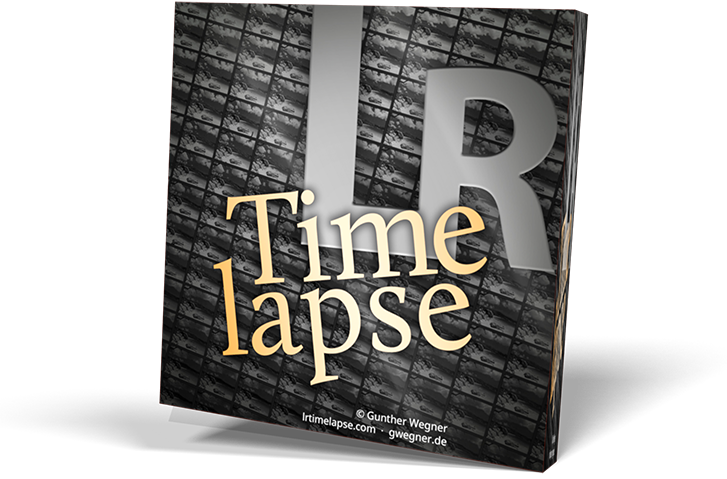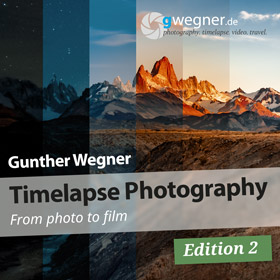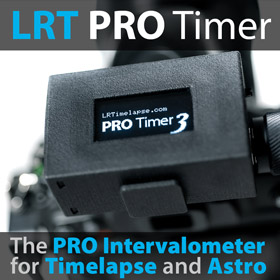
Posts: 15
Threads: 7
Joined: Nov 2019
Posts: 15
Threads: 7
Joined: Nov 2019
Normally, exposure values are capped at [-5, +5] for all types of images.
The one exception I know if are dng files which lightroom has produced by HDR merge. In this case, lightroom allows for a wider [-10, +10] range of exposure values.
Before anyone tells me I'm doing it wrong, I'll first explain my use case, with two example videos:
https://vimeo.com/381697274
https://vimeo.com/387149704
These two videos are both shot with Sony a9 and 100-400mm GM @ 400mm, mounted on a kessler crane second shooter pan and tilt head. 10 stop ND filter on the lens as well.
This specific senario requires bracketing to capture the entire dynamic range of each frame. I know that shooting bracketed timelapses is frowned upon in many cases. But I know of no other way to capture both the face of the sun and the rest of the scene without bracketing each individual frame of the timelapse. I typically shoot these in brackets of [1/8000, 1/1000, 1/125, 1/15, 1/5]. I know that the camera is limited to capturing the same dynamic range for the entire sequence here, as I'm not changing the ISO during capture or anything.
In post, I merge each frame into a dng file (as a batch), and that's where this special HDR dng file starts to exist.
When I have the full sequence conveted into DNG files I then load them up as normal in LRTimelapse. I'm able to configure and save each key frame with exposure values anywhere in the range of [-10, +10].
However, when I load them back up into LRTimelapse, I see all of the exposure values higher than 5 are now capped at 5.
This causes me to have to jump over a bunch of hoops to try to get the signal from the final images, which need exposure values higher than 5 to show any detail at all besides a small amount of the sun. I basically have to use the blacks and shadows sliders on the final images as well. But even then the final signal is not visible, so I then have to take the first tiff export sequence and convert it to DNG again. Afterwards I then use LRTimelapse again to increase the exposure on the final images so what signal is present is visible.
The feature request here is for LRTimelapse to allow [-10, +10] exposure values for HDR dng files.
Simply not capping exposure values to the [-5, +5] range might work.
A more advanced implementation could detect that a particular image sequence uses HDR dng files, and adjust the [-5, +5] boundry to [-10, +10] in only that case.
The one exception I know if are dng files which lightroom has produced by HDR merge. In this case, lightroom allows for a wider [-10, +10] range of exposure values.
Before anyone tells me I'm doing it wrong, I'll first explain my use case, with two example videos:
https://vimeo.com/381697274
https://vimeo.com/387149704
These two videos are both shot with Sony a9 and 100-400mm GM @ 400mm, mounted on a kessler crane second shooter pan and tilt head. 10 stop ND filter on the lens as well.
This specific senario requires bracketing to capture the entire dynamic range of each frame. I know that shooting bracketed timelapses is frowned upon in many cases. But I know of no other way to capture both the face of the sun and the rest of the scene without bracketing each individual frame of the timelapse. I typically shoot these in brackets of [1/8000, 1/1000, 1/125, 1/15, 1/5]. I know that the camera is limited to capturing the same dynamic range for the entire sequence here, as I'm not changing the ISO during capture or anything.
In post, I merge each frame into a dng file (as a batch), and that's where this special HDR dng file starts to exist.
When I have the full sequence conveted into DNG files I then load them up as normal in LRTimelapse. I'm able to configure and save each key frame with exposure values anywhere in the range of [-10, +10].
However, when I load them back up into LRTimelapse, I see all of the exposure values higher than 5 are now capped at 5.
This causes me to have to jump over a bunch of hoops to try to get the signal from the final images, which need exposure values higher than 5 to show any detail at all besides a small amount of the sun. I basically have to use the blacks and shadows sliders on the final images as well. But even then the final signal is not visible, so I then have to take the first tiff export sequence and convert it to DNG again. Afterwards I then use LRTimelapse again to increase the exposure on the final images so what signal is present is visible.
The feature request here is for LRTimelapse to allow [-10, +10] exposure values for HDR dng files.
Simply not capping exposure values to the [-5, +5] range might work.
A more advanced implementation could detect that a particular image sequence uses HDR dng files, and adjust the [-5, +5] boundry to [-10, +10] in only that case.




